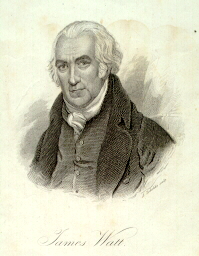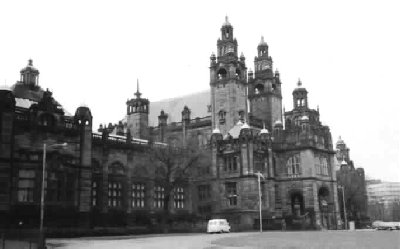Watt's Time of Ashes
Today, a story of darkness before the dawn. The University of Houston's College of Engineering presents this series about the machines that make our civilization run, and the people whose ingenuity created them.
1764 was a good year for 28-year-old James Watt. Five years later, his life began a long slide into grief and frustration.
Watt was an instrument-maker at the University of Glasgow. The year before, he'd been asked to fix the Newcomen steam engine model that demonstrated steam power to students in the natural philosophy class. It hardly moved under its own power. Could Watt identify the problem and eliminate it?
Watt struggled with the waste of steam each time it was let into the cylinder. Half of it condensed on the walls, cooled by the condensation process that'd occurred in the previous stroke.
In 1764 Watt solved the steam engine problem. He saw that if he separated condensation from the cylinder, the cylinder would stay hot and the condenser cold. No more wasted steam!
He also married his cousin, Margaret Miller, that summer. It was a happy marriage. Everything was coming up roses for Watt.
But now he had to make a working model of his new engine, and that was another matter. Watt was soon going broke, so he sold two thirds of his patent to an inventor and speculator named John Roebuck. Roebuck's iron works was in trouble because its coal mines were flooding. He hoped to use Watt's engine to pump them dry.
The engine still had too many bugs to do the job. Then Roebuck made some bad business gambles. By 1769 he, too, faced bankruptcy. He had to sell off his holdings to get out of debt, and no one would put up a farthing for his share of Watt's patent.
Matthew Boulton, an industrialist from Birmingham, finally saw what others didn't. He gave Roebuck £1200 for his share of the patent. He bailed them both out, and Watt kept struggling.
For the next four years Watt wrestled with his engine. His wife tried to buoy him. "If it will not do, something else will," she wrote. "Never despair." Meanwhile, two of their children died as infants. Finally, as if to make trouble complete, Margaret died in 1773. The last threads of Watt's life came undone. Watt tried to cope with it all. Finally he wrote, "I know grief has its period; but I have much to suffer ... "
Yet there really is a season for everything -- "a time to mourn and a time to dance." By 1776 the engine was running. Watt moved to Birmingham to work with Boulton. And he remarried, happily, once more. By the time he died 43 years later, he'd changed history and was the most honored engineer who had ever lived.
That year, 1776, Boulton could cheerfully tell Johnson's biographer, Boswell, "I sell here, Sir, what all the world desires to have -- POWER." Watt had emerged from his ashes to reshape the world. It had finally become his time to dance.
I'm John Lienhard, at the University of Houston, where we're interested in the way inventive minds work.
(Theme music)
Muirhead, J.P., The Life of James Watt, with Selections from His Correspondence. 2nd ed., revised. London: John Murray, 1859. (A rare book provided by the Rice University Library)
Arago, M., Life of James Watt. 2nd ed. Edinburgh: Adam & Charles Black, 1839. (M. must stand for "Monsieur." Arago's initials were D.F.J. This volume also includes Arago's rejoinder, "On Machinery Considered ... ," Lord Jeffrey's Elogium of James Watt from the Encyclopaedia Britannica, and Lord Brougham's "Historical Account of the Composition of Water.")
Arago, F., Eloge Historique de James Watt (Tr. from the French, with additional notes and an appendix by James Patrick Muirhead). London: J. Murray, 1839.
The latter two rare books were provided by Special Collections, UH Library. J.P. Muirhead, whose name appears in two of the sources above, was James Watt's first cousin twice removed. He and François Arago were the primary biographers of James Watt.
To every thing there is a season,
and a time to every purpose under the Heaven:A time to be born, and a time to die;
a time to plant, and a time to pluck up that which is planted;A time to kill, and time to heal;
a time to break down, and a time to build up;A time to weep, and a time to laugh;
a time to mourn, and a time to dance;A time to cast away stones, and a time to gather stones together;
a time to embrace, and a time to refrain from embracing;A time to get, and a time to lose;
a time to keep, and a time to cast away;A time to rend, and a time to sew;
a time to keep silence, and a time to speak;A time to love, and a time to hate;
a time of war, and a time of peace;What profit hath he that worketh
in that wherein he laboureth?I have seen the travail,
which God hath given to the sons of men to be exercised in it.He hath made every thing beautiful in his time: ...
Ecclesiastes 3:1-11

19th-century engraving; source unknown
James Watt

Photo by John Lienhard
The University of Glasgow

From the 1832 Edinburgh Encyclopaedia
(Click on the image for an enlargement)